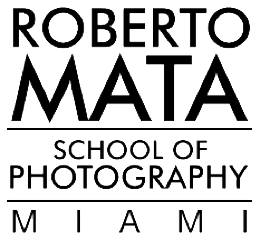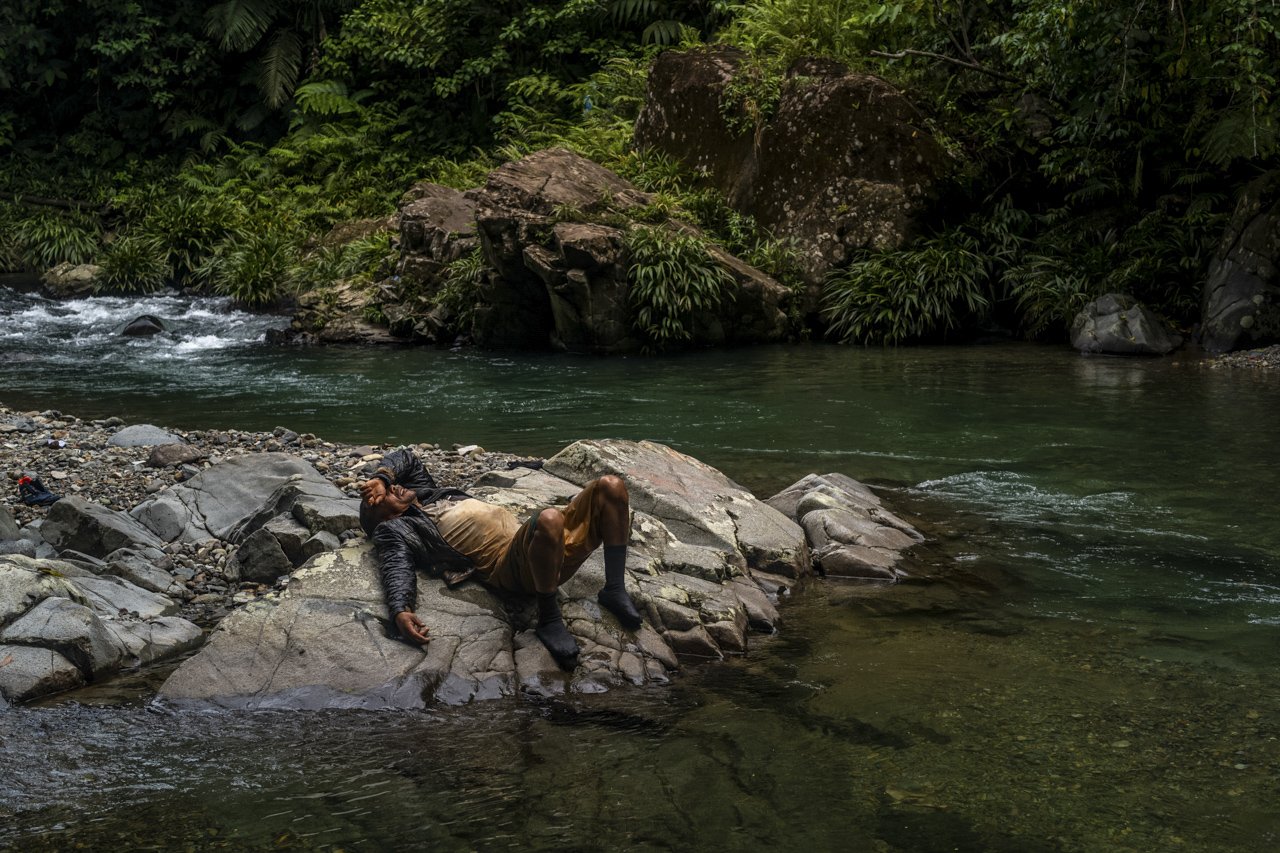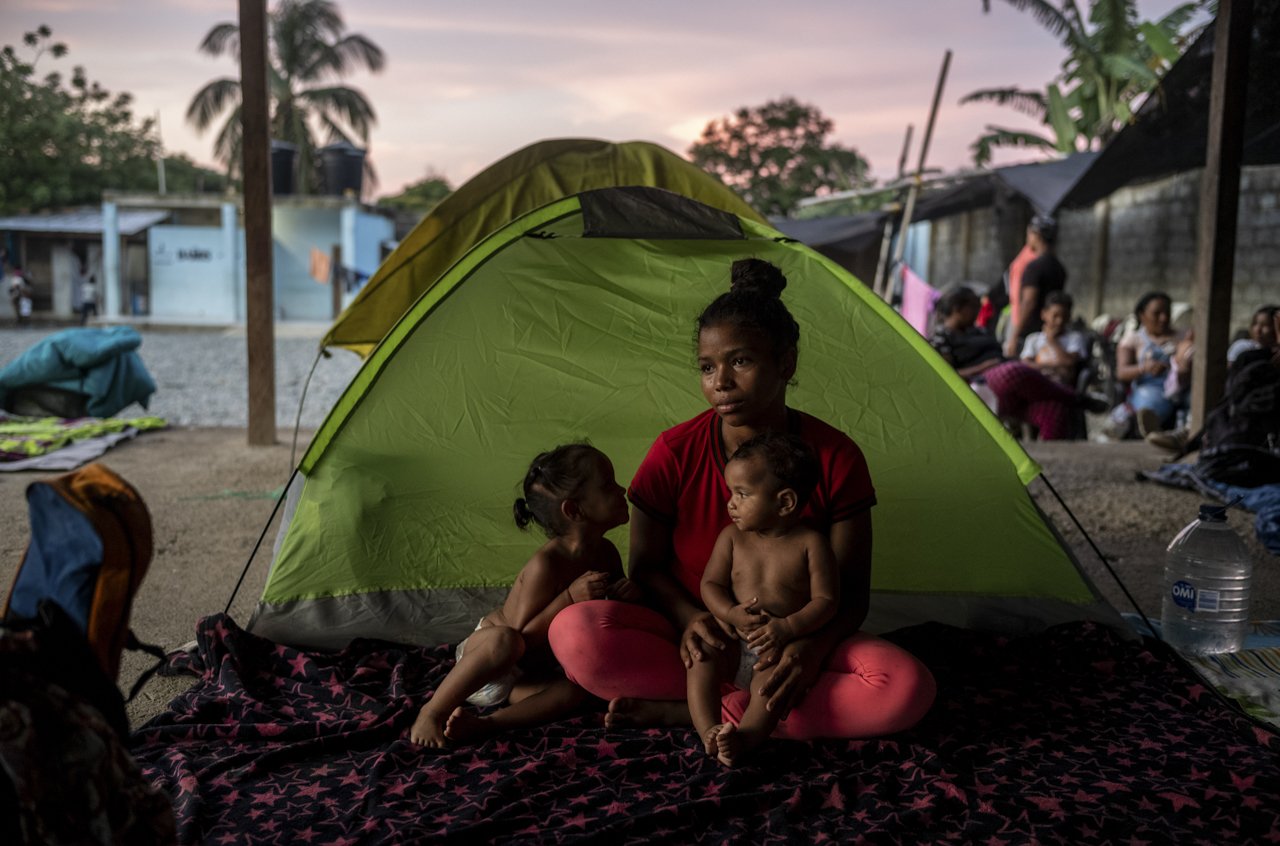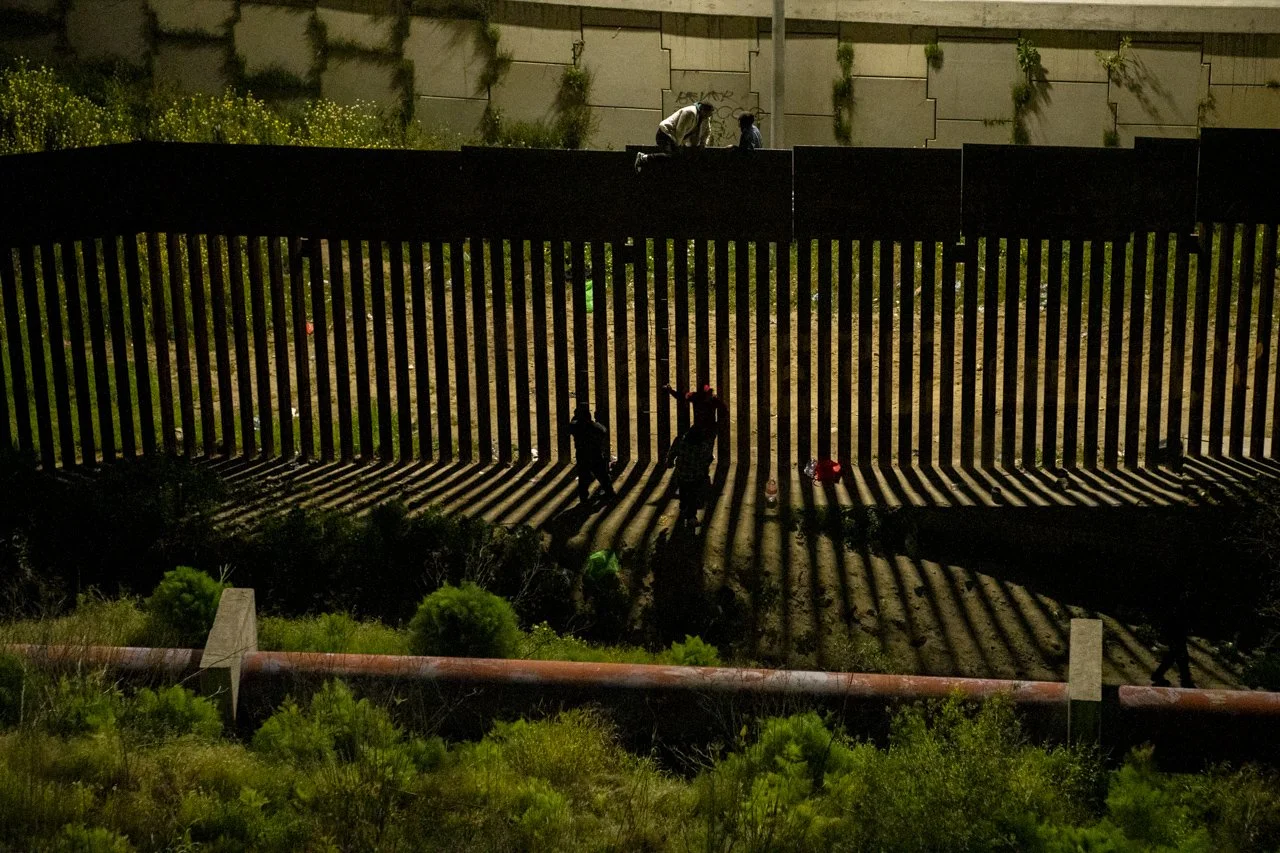PHOTO CONFESSIONAL: Federico Ríos
Luis Miguel takes a break during the walk in the jungle, he was exhausted and could no longer bear the weight of his 4 year old daughter Melissa on his shoulders
IF YOU WEREn’T A PHOTOGRAPHER, WHAT OTHER PROFESSION WOULD YOU PICK?
It’s not easy to envision myself in a different context than photography, but in a fictional scenario, I would be a painter, a musician, or a journalist
WHAT HAS BEEN THE MOST CRUCIAL DECISION YOU HAVE MADE IN YOUR CAREER’s DEVELOPMENT?
In 2012 after having been a staff photographer for national media in Colombia and a very poorly paid freelance position in an international news agency I quit and decided to go freelance, work on my personal projects and try to publish my own work.
It was hard economically and emotionally, it still is, but every day I have the satisfaction that I am working on projects that matter to me.
The beginning was especially hard, sometimes I couldn't make ends meet, there were many helping hands. Many times I took boring pictures that paid well, I took those jobs to survive as a freelancer.
A group of migrants board a boat in Capurganá to travel by night to a clandestine place on the Panamanian coast and from there begin the journey through the Darién jungle
HOW IMPORTANT IS RESEARCH IN YOUR WORK?
Research is first and foremost in the construction of my works, I usually start with a question and if the question grows with the research then I decide that it is a good idea to continue working on that topic.
IS THERE A PHOTOGRAPHER/ARTIST WHO IS A CONSTANT REFERENCE FOR YOU?
Not one but several, maybe this is one of the most important parts of my work, I often go to review the legacy and work of photographers seeking for inspirations and ideas for does and don'ts.
Starting from the big names in the industry, Robert Capa and Gerda Taro. Thomas Hoepker recently died, his images are very powerful in general, but his photograph of the young people in the river as the twin towers fall is shocking, one of my all time favorites.
Of the classics I love the work of Martin Chambi, but I also admire a lot of contemporary photographers from James Natchwey to Lynsey Adario, Finbar O Reily, Laetitia Vancon, Daniel -berehulak, Nanna Heitman, John Moore, Kiana Hayeri and many others.
Would it be a chance not to look at the recent photos of Ana Moneymaker, Evan Vucci and Doug Mills from the past week?
Personally I have a deep connection for the work of Paolo Pelegrinni and Eugene Smith.
For me it is also very important to keep looking and talking to my colleagues, people from my generation and keep looking at the work they are currently producing. When it comes to admiration, there is nothing I admire more than a photographer from the global south trying to produce meaningful work while trying to survive in this difficult, underpaid and discriminating profession: Adriana Lourerio, Victor Moriyama, Maria Magdalena, Sarah Pabst, Anita Puchard, Angela Ponce, Marco Garro, Hannah Reyes Morales, Alejandro Cegarra, Miora Rajaonary, Santiago Escobar-Jaramillo, Andrea Hernandez, Dado Galdieri, Jorge Panchoaga, Musuk Nolte, Juanita Escobar, Johis Alarcon, Daniele Volpe, James Rodriguez, Tamara Merino, Luis Antonio Rojas, Cesar Rodriguez, Juan Cristobal Cobo and many others. The list could continue very long.
I love how social media nowadays can offer a glimpse of their developing works and careers.
WHAT WOULD YOU NOT WANT TO PHOTOGRAPH?
If the story is worth it for me I would point my camera towards almost everything. I try not to shoot without a story, nevertheless I can't resist a beautiful sunset, meaningless photos, but impossible to avoid for me, even thinking about the work of Pamela Umbrico.
Mozhgan Turkmani, an Afghan migrant waits in a small hotel in Mexico while her father tries to get permission from the Mexican authorities to continue his journey north to cross the border into the United States
WHAT EQUIPMENT DO YOU USE, AND WHAT IMPORTANCE DO YOU GIVE TO TECHNIQUE?
I have been using Leica for a while with results I am really proud of. I use system M and system SL for both: film and digital photography. I choose the camera and lens depending on what I'm going to photograph. Equipment and technique for me are very important, the color, the grain, the contrast and latitude, composition and light and that´s equipment plus technique. Of course I agree, with claiming that it is the human and not the tool, but there's no better way to get the results you are looking for than having the appropriate tools for what you're doing.
Is not the same to write a beautiful poem with grammar errors, or play the most romantic song out of tune, photography is not different from that.
WHAT IS THE STARTING POINT OF YOUR CREATIVE PROCESS?
My starting point is always a question, usually about a situation I read about, talk about or hear about. Then I try to read a bit and talk to people who know and understand the situation, see if there is anything done about it, usually there is, so I look for references from other photographers who have worked on the same subject and then I travel to see for myself and photograph.
Hamlet Ortega lies on a rock devastated, the little food he was carrying was given to his 3 daughters and he had not eaten anything during the jungle crossing
HOW DO YOU DEFINE YOUR PHOTOGRAPHY WITH A # TAG?
I would define my work as #DocumentaryPhotography
Thousands of migrants cross the Rio Muerto on foot on the first day in the jungle crossing the Darien Gap
at what point did you feel you were a photographer, and what made you think that way?
I started photographing very early in my life but it is not easy to point at a specific moment where I felt I was a photographer. Maybe when I was at high school and a teacher, Adriana Villegas, gave me my first opportunity as a photographer for a local newspaper.
HOW DO YOU DEAL WITH REJECTION?
There are two types of rejection in these scenarios I work in.
First in the professional scenario. One of them is the rejection of the editors, but with time it is easy to understand that they are not your enemies but they are just trying to understand what the media might publish. The other one is the rejection from galleries, contests and events in which I could participate, but well, that's a strange mix of search, luck, individuals and a thousand other components. In the end I think it's something you don't have to pay so much attention to.
The second type of rejection is the personal one, the one that comes from individuals and I could also divide it in two.
First, a common form of rejection is from the people I want to photograph, but that's easy to overcome, if they don't want to be in the picture there's no reason to photograph them. period.
The last and the most difficult to understand for me is the rejection of people who think that photographing is to encourage the people photographed. those who reject my work because they think that history through images should be in favor of a political side. I have had many negative reactions if I photograph political candidates, there is always someone who hates me because they think I am encouraging their rival.
HOW DO YOU THINK YOU HAVE ACCOMPLISHED SUCH SUCCESS?
I have been thinking about this complex idea of success. What is that? I suppose I feel proud of what I've achieved so far, I can pay my bills and have a life as a photographer, but I also sometimes ask myself: Am I working hard enough? Am I putting all my energy into this? Am I getting the results I'm looking for? And the most important question for me: Will my photographs contribute to history and society? I´m not sure I´m done, I think at this point of my career is where I need to work harder and harder.
I get up every morning to work hard, but it would also be fair not to mention the help and support of my friends and my family. I have loving people around me who are able to be on the phone with me for an hour just to listening to me and decompress and lift my spirit to continue working. Getting to where I am seems like a lonely path, but it's a bit of a leap, I've always been surrounded by friendly brothers and sisters giving me a hand.
Sometimes I think of Snoop Doggy Dog's phrase:
Last but not least, I wanna thank me
I wanna thank me for believing in me
I wanna thank me for doing all this hard work
I wanna thank me for having no days off
I wanna thank me for, for never quitting
I wanna thank me for always being a giver
And tryna give more than I received
I wanna thank me for tryingna do more right than wrong
I wanna thank me for just being me at all times
Snoop Dogg, you a bad motherfucker.
I have done my part, but none of this would be possible with a bit of luck and a big dose of people's help.
Yineska Colina with her two daughters. The three were traveling alone with the intention of crossing the jungle but did not have the money to pay the coyotes to enter the jungle
HOW DO YOU APPROACH STRANGERS IN YOUR PROJECTS OR TO INCLUDE IN YOUR PROJECTS?
Most of the time I have my cameras hanging around my neck, that helps a lot because then they understand that I am a photographer. but I also always try to talk to people before taking pictures. I love the idea of slow photography: talking first, understanding who and why I'm photographing a character, and having the character participate in telling their story.
A migrant crosses the wall into the U.S. in Tijuana with a makeshift ladder
IS IT COMMON FOR YOU TO QUESTION YOURSELF OR YOUR PHOTOGRAPHY?
I question myself and my photography several times a day. I have come to a conclusion that keeps me alive, I am not willing to change the world but to create a body of work for history. I don't have an Adam complex, my photographs are not the first, nor the most important, just a part of the narrative, a fragment of the collective view, the best way to see my photos, or those of any photographer, is next to the work from other photographers. How many photographers have photographed the rebels? or migrants? They are global issues and I feel that the best way to see photographs is in dialogue with other authors and other images.
Gabriel Ynfante walks holding the hand of little Francheska on a muddy slope, although she was not his daughter Gabriel felt committed to take care of her, during the walk he sang the children's round “Bartolito” to which the girl responded by singing
WHAT WOULD YOU SAY TO A NEW PHOTOGRAPHER WHO IS JUST STARTING OUT?
If you really want to be a photographer, the whole path, every step, will teach you valuable lessons, use it to your advantage. It's not easy, but it's not impossible either. This is not a job, it is a passion and that difference makes it not easy to decide and negotiate, this is not an 8 hour job, from 9 to 5 with quiet weekends, this catches you 24/7, this makes you waking up in the middle of the night to write a project you just thought of or getting up at 3:00 am to travel in search of a photo you want. There is no comfort, money, or luxury here. There is a lot of work to do, but if you do it because it fills your soul, do it well.
ABOUT Federico ríos
Colombia, 1980
Ríos is a photojournalist who has published numerous works on Latinamerica, the
armed conflict, environment and its relationship with society.
His work has appeared frequently in The New York Times, National Geographic and
other media such as, Stern, GEO, Time, Paris Match and LFI Magazine.
Pulitzer finalist on International Reporting 2023
Winner of ICRC Humanitarian Visa d´or award 2023
Photojournalist of the year, Poy Latam 2023
Winner of People Choice Award, Prix Pictet 2023
Winner Hansel-Mieth Preiss Alemania 2019
First prize, news series POY Latam 2017
Portrait by Andres Anfassa









